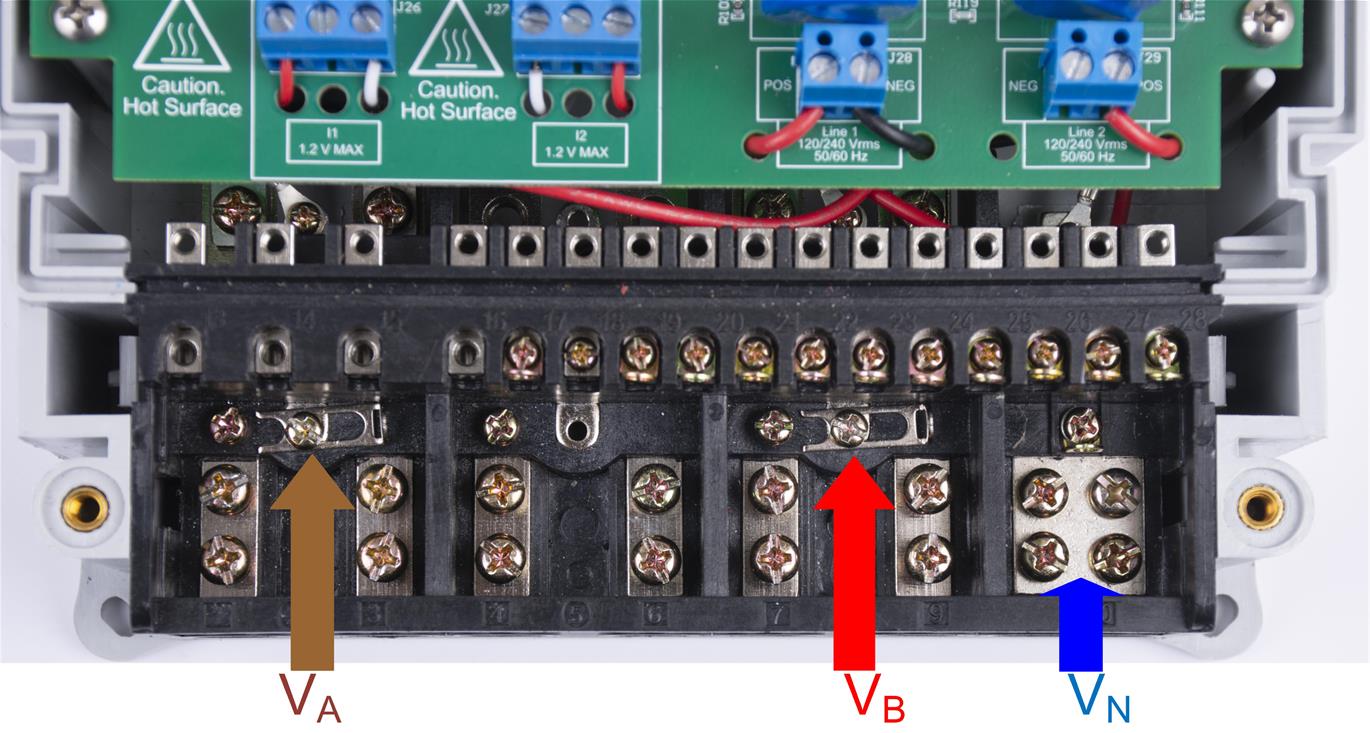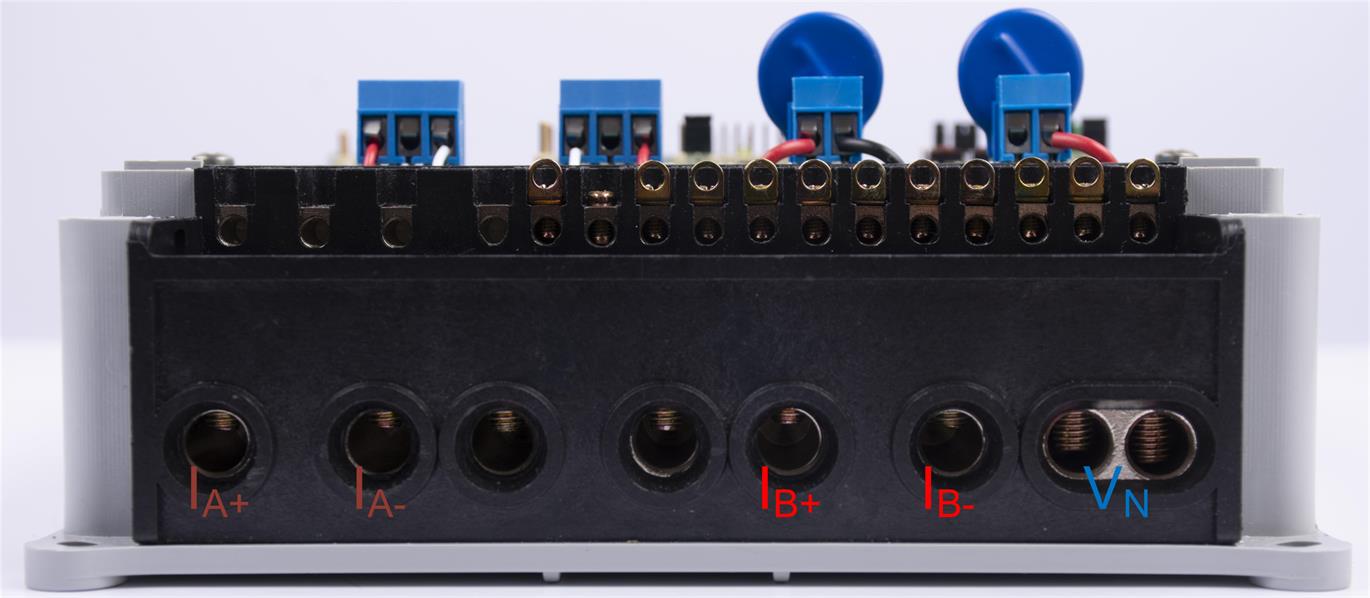TIDUEM8B March 2019 – February 2021
3.1.2.1.1 Two-Voltage Connections
AC voltages and currents can be applied to the board for testing purposes at these points:
- Terminal block "J28" corresponds to the line voltage connection for phase A. This terminal block is a two-position terminal block that has connections for phase A line voltage as well as the neutral. The terminal block position on the left, which is labeled "POS", is where the line connection for phase A is made. The terminal block position on the right, which is labeled "NEG", is where the neutral connection is made. The neutral connection at this terminal block cover is shorted with the neutral connection on "J29" so the neutral only needs to be connected to one of these two positions. Note that the order of the phase line and neutral is reversed here compared to the order on J29.
- Terminal block "J29" corresponds to the line voltage connection for phase B. This terminal block is a two-position terminal block that has connections for phase B line voltage as well as the neutral. The terminal block position on the right, which is labeled "POS", is where the line connection for phase A is made. The terminal block position on the left, which is labeled "NEG", is where the neutral connection is made. The neutral connection at this terminal block cover is shorted with the neutral connection on "J28" so the neutral only needs to be connected to one of these two positions. Note that the order of the phase line input and neutral is reversed here compared to the order on J28.
- Terminal block "J26" corresponds to the current inputs after the sensors for phase A. This terminal block is a three-position terminal block but only the leftmost and rightmost positions are used. The center position, which is connected to GND, is not connected to the CT. The terminal block position on the most left, which is labeled "POS", is where the positive terminal of the CT should be connected. The terminal block position on the most right, which is labeled "NEG", is where the negative terminal of the CT should be connected. Select the applied current to the input of the CT so that it does not exceed 100 A. In addition, before performing any test, verify that this terminal block is securely connected to both output leads of the CT. Note that the order of the CT leads is reversed here compared to the order on "J27".
- Terminal block "J27" corresponds to the current inputs after the sensors for phase B. This terminal block is a three-position terminal block but only the leftmost and rightmost positions are used. The center position, which is connected to GND, is not connected to the CT. The terminal block position on the most right, which is labeled "POS", is where the positive terminal of the CT should be connected. The terminal block position on the most left, which is labeled "NEG", is where the negative terminal of the CT should be connected. Select the applied current to the input of the CT so that it does not exceed 100 A. In addition, before performing any test, verify that this terminal block is securely connected to both output leads of the CT. Note that the order of the CT leads is reversed here compared to the order on "J26".
Figure 3-3 and Figure 3-4 show the various test setup connections required for the reference design to function properly for the two-voltage configuration.
 Figure 3-3 Top View of Reference Design With Test Setup Connections, Two-Voltage Configuration
Figure 3-3 Top View of Reference Design With Test Setup Connections, Two-Voltage ConfigurationFigure 3-4 shows the connections from the front view. VA and VB, correspond to the lines for phases A and B. VN corresponds to the neutral voltage from the test AC source. IA+ and IA− correspond to the current inputs for phase A while IB+, and IB− correspond to the current inputs for phase B.
 Figure 3-4 Front View of Reference Design With Test Setup Connections, Two-Voltage Configuration
Figure 3-4 Front View of Reference Design With Test Setup Connections, Two-Voltage Configuration